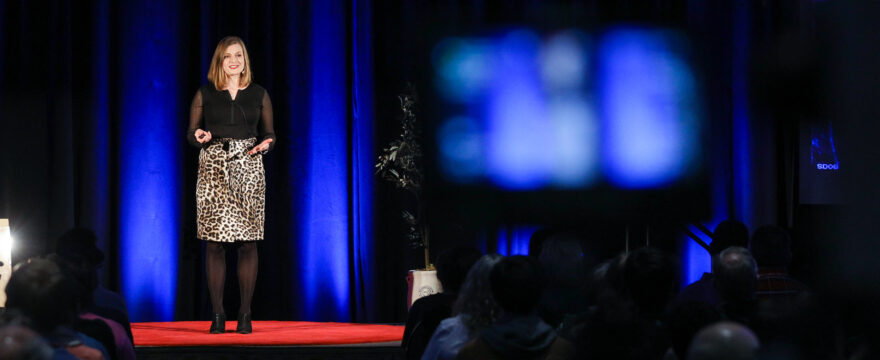Within the past decade, TED talks (TED = Technology, Entertainment, and Design) have become a YouTube and social media mainstay. Some have gone viral with millions of views and some have even launched careers. They inspire you, teach you, and even make you laugh. They’ve become so popular that there is a TED podcast and show on Netflix.
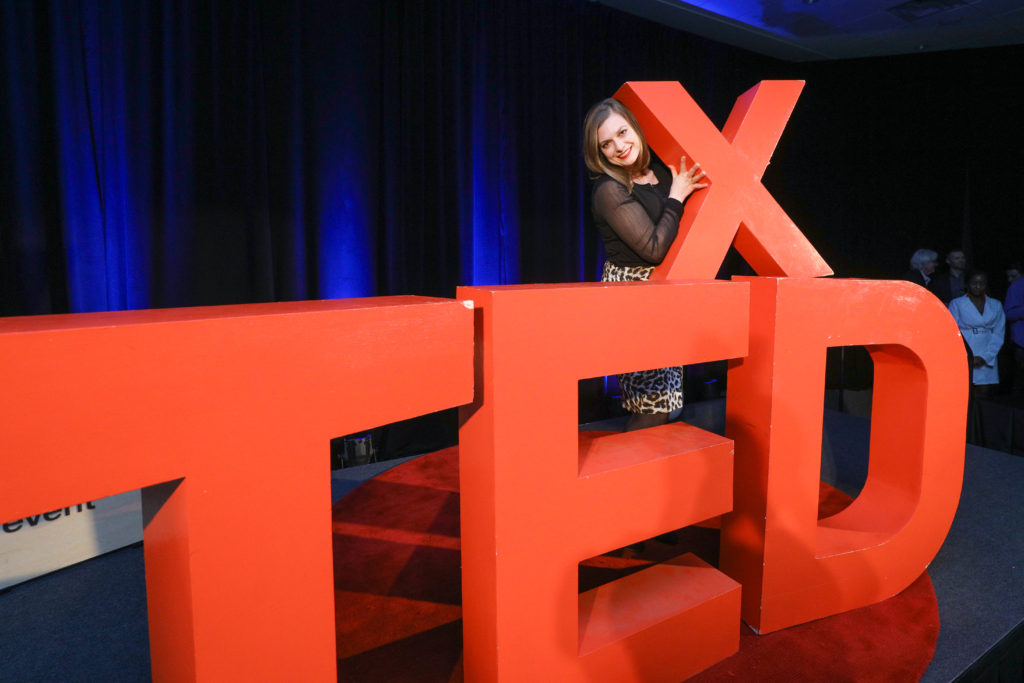
When I was invited for a TEDx talk at Furman University, I was ecstatic. TEDx is the same brand as TED, but it is an event that is independently organized. Through working at the North Carolina Museum of Natural Sciences, I’ve given at least a hundred talks and loved doing so, but I knew that TED would be different for several reasons. TED talks were filmed, which meant that there was a possibility of thousands of people (or more!) viewing my talk. TED talks are also inspirational, they move people. While I consider myself a good public speaker, I knew I was going to have to work extra hard to make sure my talk would be TED-worthy.
How did I make it happen? And what was it really like to be a speaker at the conference? I’ll take you through the whole TED experience here and my process here.
First Draft – Words Only
One of the cool things about TED talks is that they give you a coach to work with. I was expecting instructions from the coach – maybe a series of guidelines to follow or best practices, but I, but I didn’t start working with my coach until I already had a solid draft.
Lots of people (including me) usually start their talks by opening powerpoint. I had been working on creating videos at the museum a lot and instead approached my talk like a video and started with my words first. I wrote my talk out first – almost like a screen play. I wrote out exactly what I wanted to say, although I knew when I presented that I would not be saying those words verbatim. While I was writing my text, I asked myself these questions in the back of my mind:
- What do I want to come across most?
- Is there a story arc? (See “5 Steps to Convert Your Presentation into a Story” for help on this)
- Does tension build?
- Is there a reveal?
- Does the talk come full circle? (Does the end relate to the beginning?)

Making Slides to Match Words
After I wrote down what I wanted to say, I created the slides that matched my words. It’s okay to reuse slides from past talks, but ONLY if they match what you want to say and if they are cohesive (It’s really obvious when people pull slides from other talks and they don’t match). For this talk, I had to create quite a few new slides. I used these principles:
- One single large photo per slide is best
- Photos must be beautiful and clear – no pixelated images. If you need photos, visit Pixabay.
- No or very little text (only one slide in my talk had text)
After I made the slides, I copied and pasted my text on the notes section of each slide so I knew what I wanted to say for each one.
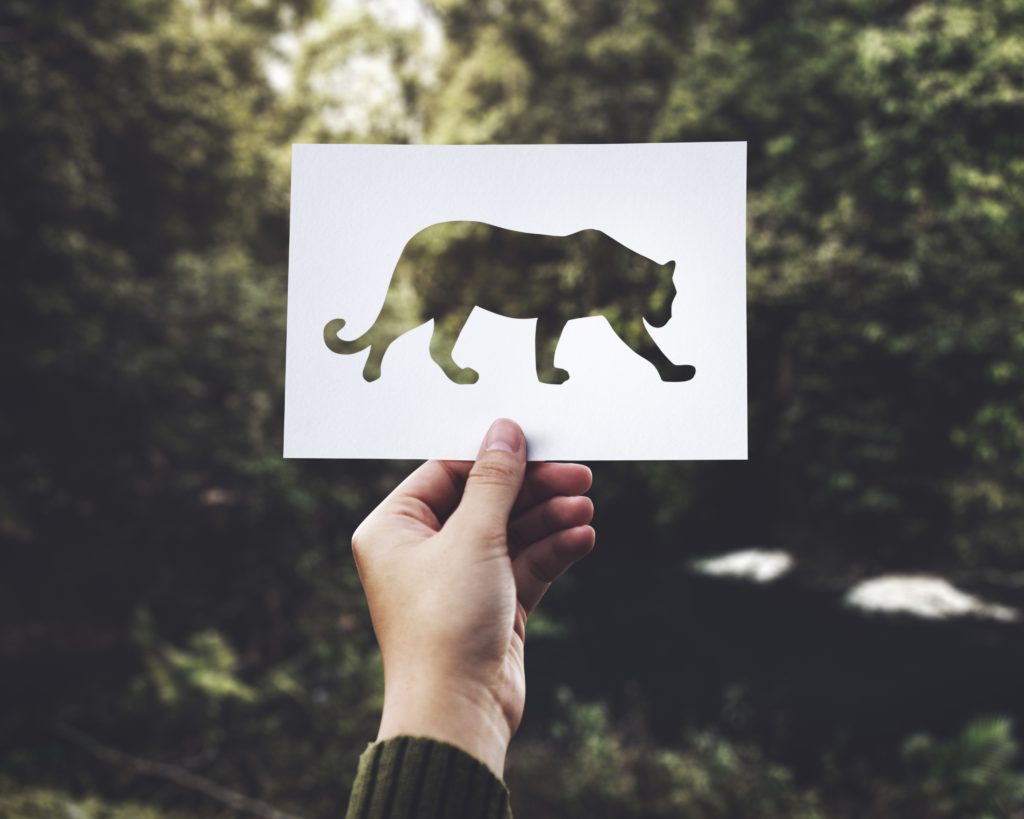
Coaching Call
I submitted my talk to my coach and arranged a phone call to discuss them. The biggest and most important feedback I got from him was that I really needed to have an “idea worth spreading,” which is the while point of Ted talks. I realized that I had a couple interlocking themes and that I really needed to emphasize what the main one was and make it pop. He recommended I do this but summarizing it in a few words, which eventually became my title.
Soliciting More Feedback
I also solicited feedback from my lab. No matter how good of a speaker you are, by working with others, you will always have a better talk. ALWAYS. I began working incorporating the changes from my coach right away because I was scheduled to present in lab meeting the next day. I didn’t even have time to finish making the slides by the time I had to present, but that was OK. Reading the slides to my lab was EXTREMELY helpful. They helped me make sure my talk covered all of the points in a cohesive manner and put my research into it in a larger context. Reading it aloud, even to your self, also helps. You’ll be able to hear things that sound out of order or awkward phrases.
Before this point, I didn’t watch any Ted talks. of course I’ve seen some before, but I didn’t watch any new ones because I wanted mine to have my own unique voice. I think this was a good strategy for making the overall making of the talk, but before I finalized my slides, I did watch a couple related to my field. This helped because I could see different approaches and as a result, I decided to add a lot more photos and some drama.
My advisor also sent me this video to watch from Melissa Marshall, another TED speaker. It’s long, but worth the investment of your time. With the help of my coach, lab, and this video, I made changes to my slides and had them submitted about one week before the talk (and according to the deadline).
Practice, Practice, Practice
The following week was all about practice. I HATE practicing talks aloud, but you HAVE to do it. You can’t just say it in your head and you really can’t wing it – you can always tell. I practiced as much as I could, but to be honest this is something I procrastinate because I find it draining. Even reading the slides aloud to myself wears me out for some reason. By the time Thursday rolled around, I started to get nervous because I didn’t feel like I practiced enough – I had just one more day until the big event!
Dress Rehearsal
Friday morning I drove west to my hotel in Greeneville, South Carolina for the dress rehearsal at Furman University. I practiced once more that morning and was going to recite it in the car, but instead ended up listening to my book and podcasts. I just found it too hard to talk and drive! My coach told me not to memorize it, but I almost felt like I had to to make sure the timing and pacing was right. I would have to see see how I would do during the dress rehearsal and then take it from there.
When I arrived at the hotel, a Furman student chofered me to the talk location (they were all soooooo nice!). There, I was invited into the infamous green room with the other speakers. I say infamous because I’ve heard on the Tim Ferriss Show how nerve-racking this room can be, even though it is intended to be a calm, peaceful area before you go on stage. This is where we would wait before we went on stage to give our talks. The other speakers were super nice and we quickly bonded over how nervous we were.
We didn’t end up doing a full dress rehearsal, but instead practiced our hand offs from the emcee, and entering and exiting stage. This sounds simple, but we had to practice making sure we never left the red circle carpet empty and I also got to practice using the a Britney Spears-style microphone (which was awesome). We started off with our first few slides and clicked through all of them to made sure they worked, and practiced the ending.
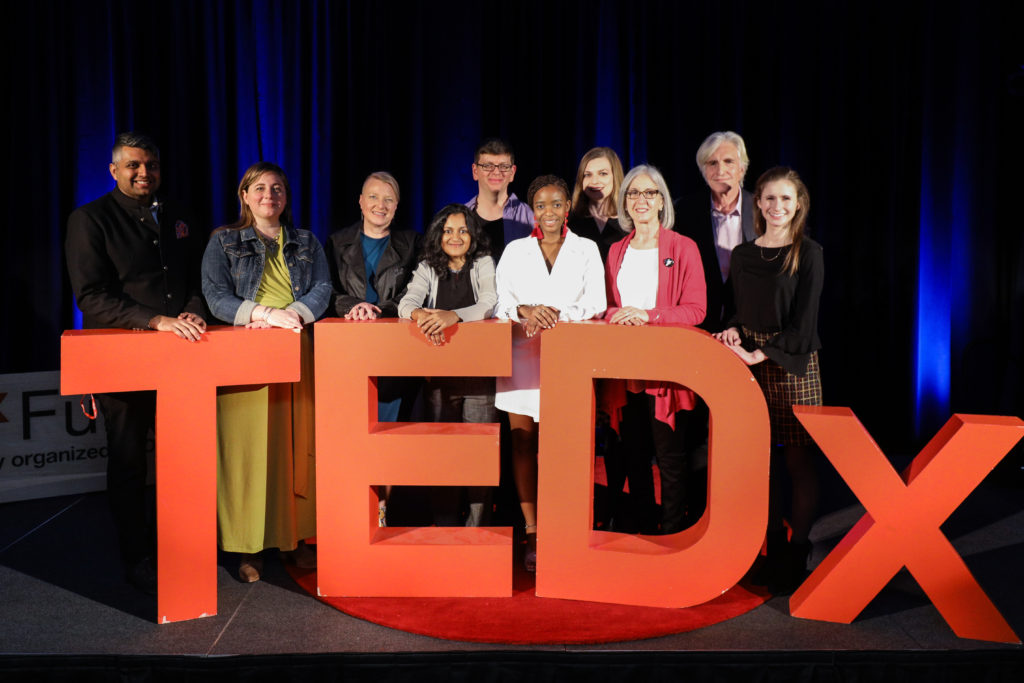
The dress rehearsal also gave us a feel for being on stage. Luckily, this didn’t make me nervous because at the North Carolina Museum of Natural Sciences where I work, we give talks on the Daily Planet stage. I do remember being super nervous the first time I gave a Daily Planet talk and being blinded by the lights, so I considered myself lucky having gone through this.
What I was (super) nervous for was being filmed. Sometimes I stutter. Or start things wrong. Or even forget to say things. When talking in front of an audience, I am completely comfortable saying things like “I forgot to mention that…”, but I did not want to do this for the video! The audience at the event is super important, but there’s also the audience of the whole Internet. My biggest fear was messing up my words or forgetting to say something. We did learn through the dress rehearsal though that live was not the same thing as unedited. If we really messed up, we could take a breath and start that slide or sentence over again. This was reassuring!
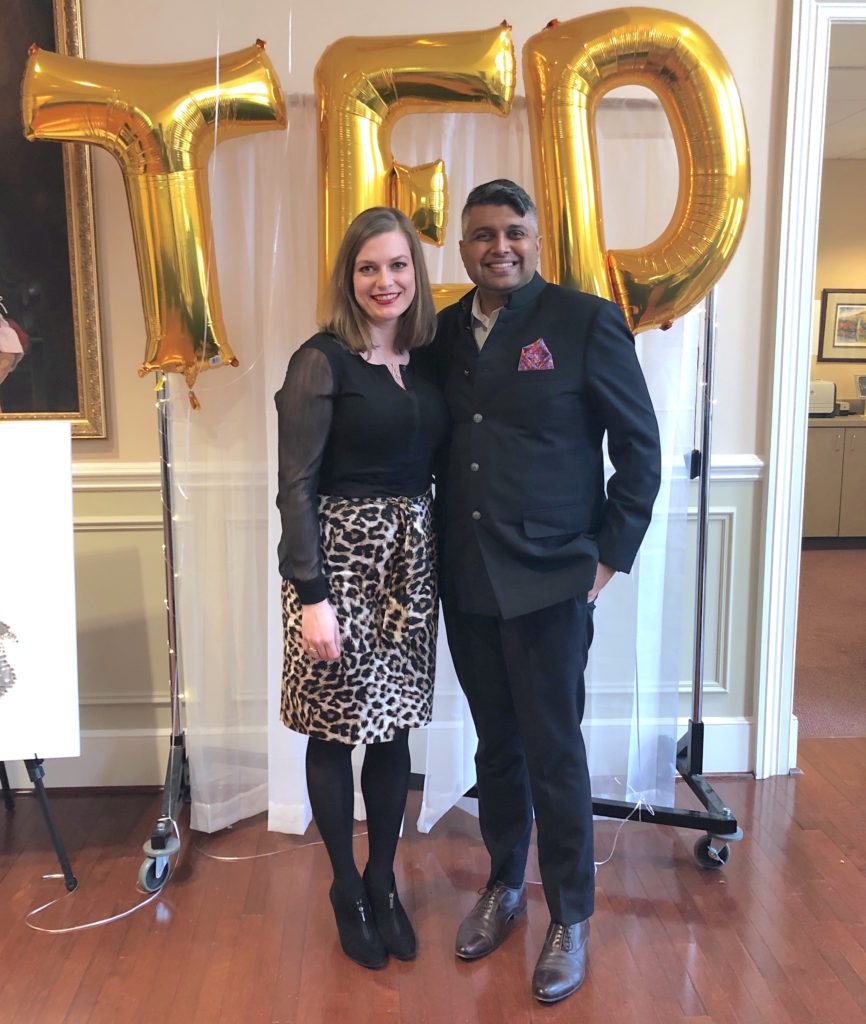
My favorite part of this day was that I reunited with someone that I knew from 16 years ago!!!!!! How small the world is! One of the other TED speakers was a student that I had traveled to Kenya with when I first went in 2002. He said he recognized me by my laugh. We instantly reconnected and I felt like I was back in Kenya.
Because I didn’t practice my full talk on stage that day, and I woke up super early that morning to drive to Greenville, I skipped out on dinner to go back to the hotel, practice my talk a few more times, and then watched Ru Paul’s Drag Race before I went to bed early.
The Big Event
The TED talks didn’t start until 1 pm that day, and we had until 11 am until we had to be there, so I had more time to sleep and practice. I was thankful for this because my anxiousness throughout the week from the buildup of the event made me exhausted. I also wanted to have ample time to make sure I looked fancy ; )
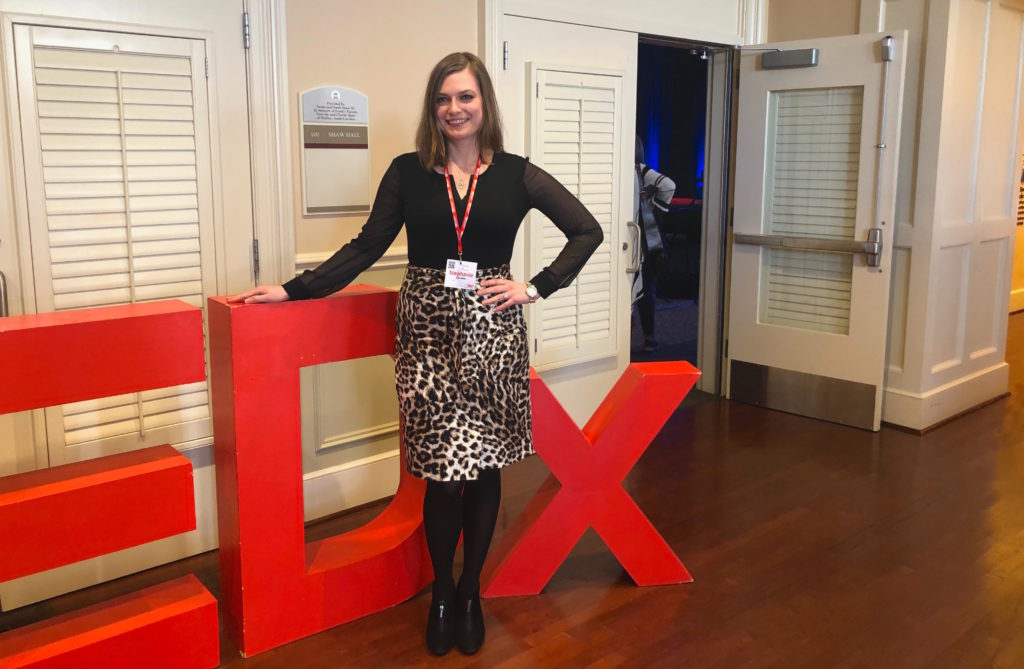
The speakers all ate lunch together and it was amazing how close we had become in less than 24 hours. Everyone was so supportive of one another and really believed that all of us would do well!
The people waited in line to come in and the event finally started. I was first after intermission, but I wish I had been first overall, or at least in the first half. My nerves were really starting to get the best of me. Before intermission, I went outside and practiced my whole talk in the parking lot without my slides and I did it perfectly. I felt set to go.
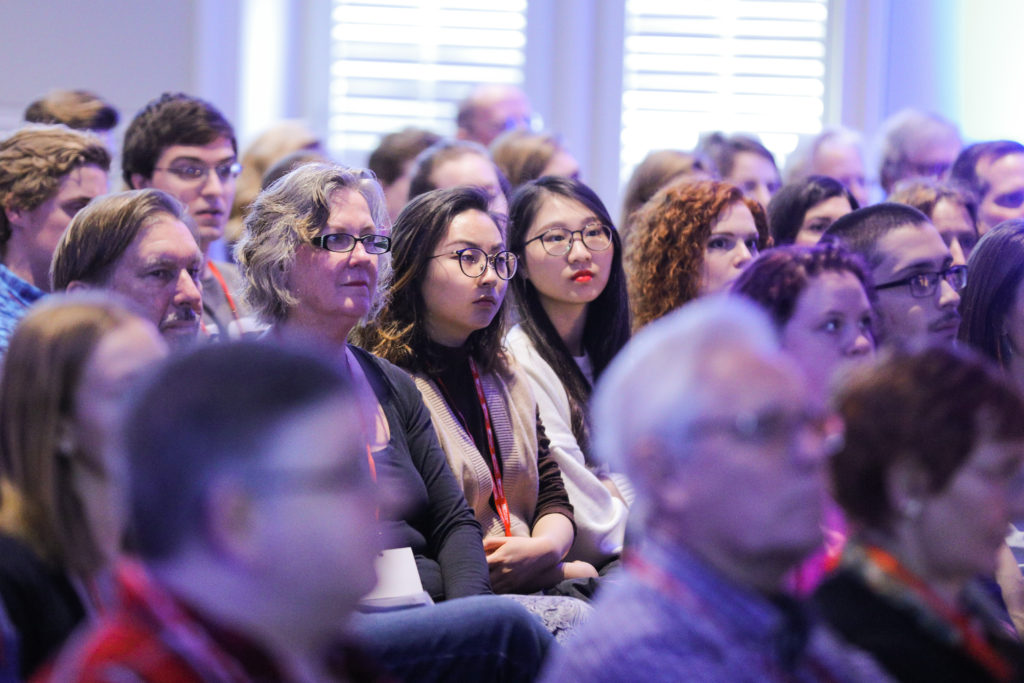
During the intermission, I got mic-ed up and towards the last 5 minutes I waited just offstage. It was almost go time and I could feel my body fill with adrenaline. I practiced 4-7-8 breathing and then just started pacing in circles. I just had to keep moving and doing deep breathing. Finally the time to go on stage had come.
Giving the talk was honestly exhilarating. I love giving talks and each time, no matter how many times I’ve practiced it, I remember that the present audience doesn’t know it, so it’s new to them. It’s also such a strange experience; you’re saying something, but at the same time you are processing so many things – the lights, the audience’s reactions, how you are composing yourself – that at times you don’t even realize what you are saying at all. Part of you is on this autopilot mode.
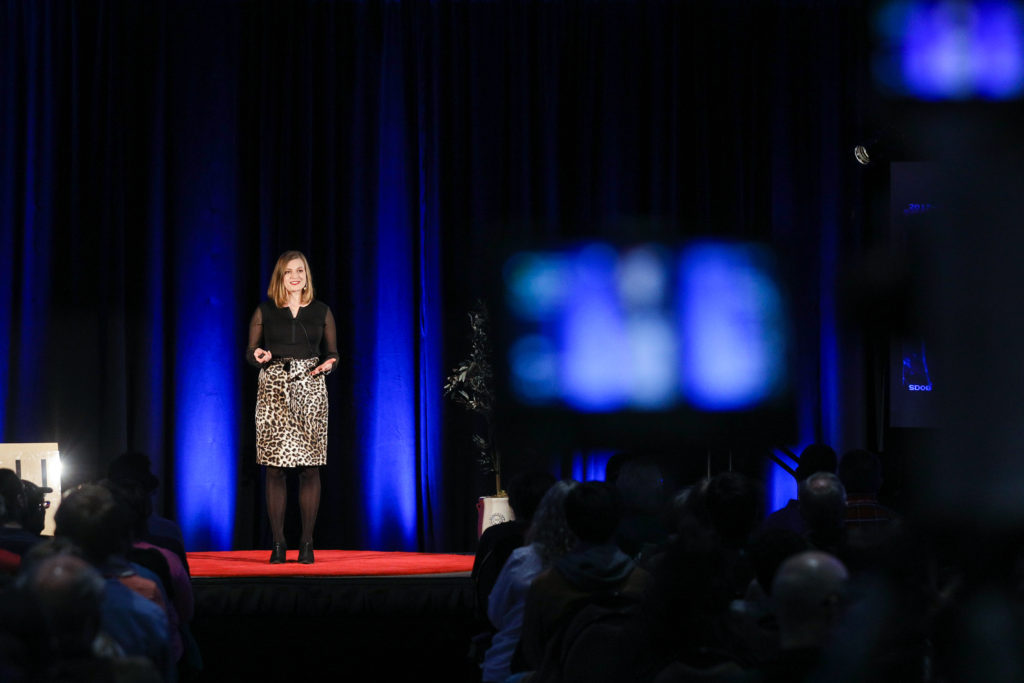
Overall, I was really happy with my performance. I had to move my hair out of my face, but was hoping they could edit that out. I did forget to say one line I really wanted to say, which I realized at the very end because it is related to the last slide. In other words, my worst case scenario happened. I kicked myself internally for getting it perfectly in the parking lot, but not on stage! I wanted to do it again, but I also knew that no one would know the difference.
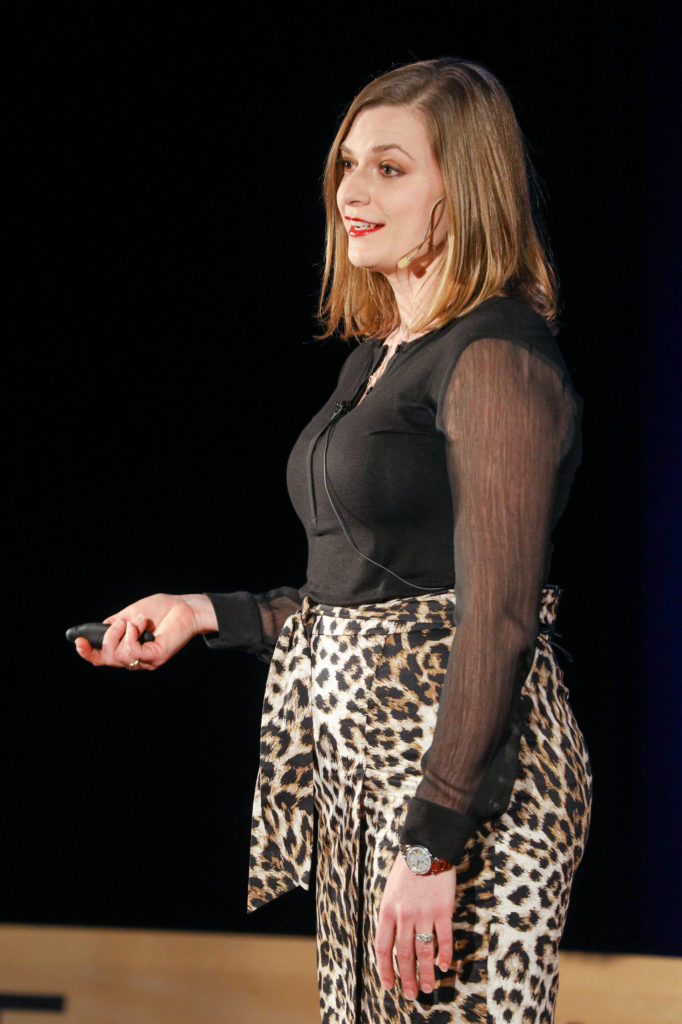
It was all over now, and I could return offstage and let go of all of my anxiousness. I knew that giving a TED talk was going to be rewarding professionally, but what I didn’t realize was how rewarding it was going to be personally! Not only were the other TED speakers’ talks incredibly moving, but I also got to know them on a personal level – even in that super short time period. The next day, I was happy to see Facebook friend requests and personal messages. I know that the people I shared this experience with will now be a part of my life.
Giving a TED talk was certainly an unforgettable experience. Check out the final result.
Love this post? Share it with friends!

